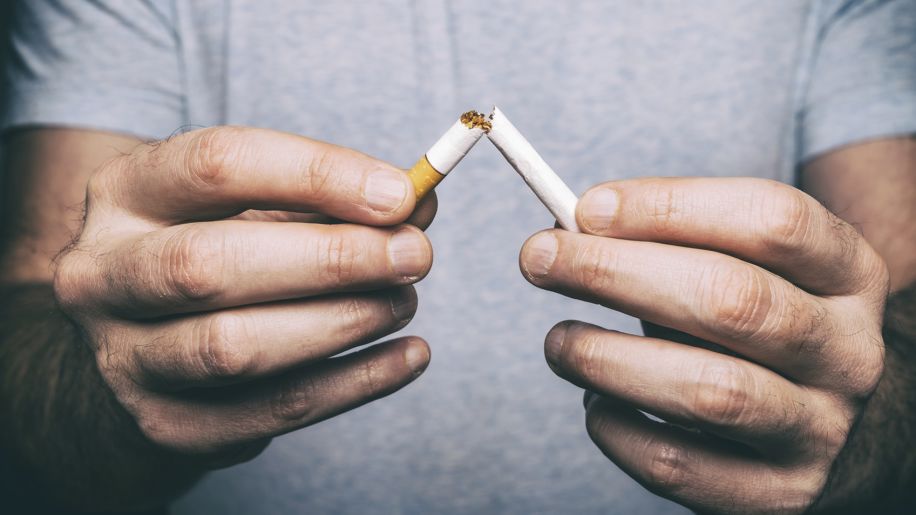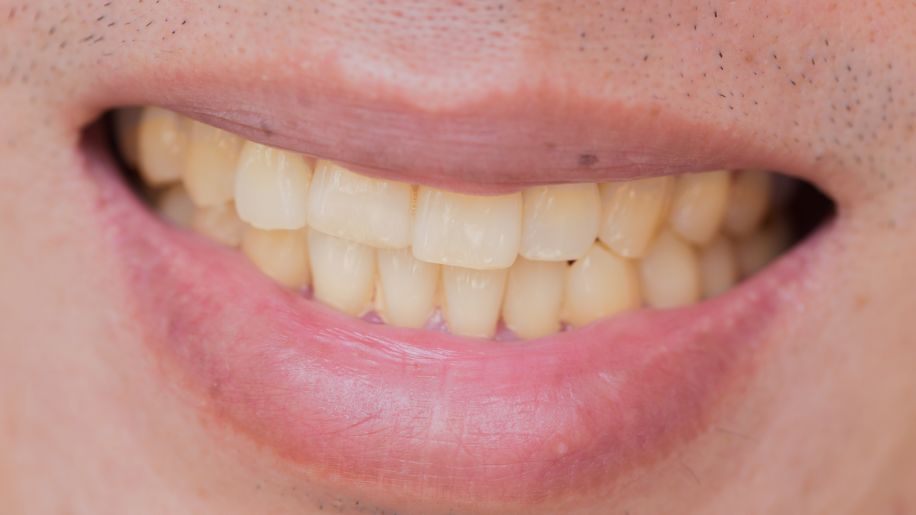7 unexpected side effects of smoking
Cigarettes can affect your health and appearance in surprising ways.
Updated on August 5, 2024

In the United States, smoking is the number one preventable cause of death, disability, and disease. According to the Centers for Disease Control and Prevention (CDC), more than 28 million adults in the U.S. smoke cigarettes, and each day about 1,600 young people try a cigarette for the first time.
Smoking affects your lungs, but did you know that it can take a toll on… Show More
In the United States, smoking is the number one preventable cause of death, disability, and disease. According to the Centers for Disease Control and Prevention (CDC), more than 28 million adults in the U.S. smoke cigarettes, and each day about 1,600 young people try a cigarette for the first time.
Smoking affects your lungs, but did you know that it can take a toll on the rest of the body, too? In addition to an increased risk of lung cancer and heart disease, smoking also causes changes to your appearance, and may even contribute to early menopause. In fact, the CDC states that smoking causes harm to almost every organ in the body.
Here are seven additional ways that smoking can affect your life.
Show Less
Discolored (and missing) teeth
A 2023 review of studies published in the journal Clinical and Experimental Dental Research looked at 27 studies and confirmed what people who smoke may already know—that smoking causes both teeth and dental hardware (like fillings) to turn yellow and brown. The research also showed that e-… Show More
A 2023 review of studies published in the journal Clinical and Experimental Dental Research looked at 27 studies and confirmed what people who smoke may already know—that smoking causes both teeth and dental hardware (like fillings) to turn yellow and brown. The research also showed that e-cigarettes and vaping cause discoloration, though slightly less than conventional cigarettes.
Smoking doubles the risk for gum disease, and it also makes the condition harder to treat. Gum disease can cause gums to bleed, and in severe cases, it can cause teeth to fall out. In fact, according to the CDC, people who smoke are three times more likely than people who do not smoke to lose all of their teeth.
Show Less
Discolored skin and nails
Smoking can harm your complexion, causing dull, dry, and grey skin. Cigarette smoking can also make the face look bony or gaunt.
The skin on your face isn’t the only area that’s affected, though. The skin on your hands and your nails are also affected each time you reach for a cigarette. The tar in… Show More
Smoking can harm your complexion, causing dull, dry, and grey skin. Cigarette smoking can also make the face look bony or gaunt.
The skin on your face isn’t the only area that’s affected, though. The skin on your hands and your nails are also affected each time you reach for a cigarette. The tar in cigarettes collects on your hands and under your fingernails, causing yellowing.
Show Less
Erectile dysfunction
Smoking causes weakened erections and even erectile dysfunction (ED). In order to sustain an erection, blood must be able to reach and fill the penis.
But chemicals found in cigarettes can damage the lining of blood vessels and cause arteries to harden, both of which decrease the body’s ability to… Show More
Smoking causes weakened erections and even erectile dysfunction (ED). In order to sustain an erection, blood must be able to reach and fill the penis.
But chemicals found in cigarettes can damage the lining of blood vessels and cause arteries to harden, both of which decrease the body’s ability to pump blood to the penis. Tobacco and nicotine can also cause inflammation in the body and can affect the immune system, which can raise the risk of ED.
Quitting may reverse the condition. A 2023 review published in the journal Sexual Medicine Reviews found that quitting smoking could reverse ED in many people.
Show Less
Early menopause
Menopause is not having a menstrual cycle for 12 months in a row. The average age of menopause is 51, but smoking can hasten the onset of menopause. One 2018 review published in the journal PLOS Medicine looked at 17 studies and found that people who currently smoke have twice the risk of early… Show More
Menopause is not having a menstrual cycle for 12 months in a row. The average age of menopause is 51, but smoking can hasten the onset of menopause. One 2018 review published in the journal PLOS Medicine looked at 17 studies and found that people who currently smoke have twice the risk of early menopause compared to those who’ve never smoked. Even people who formerly smoked had a 15 percent higher risk than people who never smoked.
According to an analysis of eight studies published in 2019 in the American Journal of Obstetric Gynecology, smoking is also one of the top risk factors for more frequent and more severe hot flashes, and night sweats during menopause. The good news is that quitting smoking before age 40, in addition to maintaining a healthy weight, can help to significantly lower this risk.
Show Less
Wrinkles
Smoking can contribute to premature wrinkles. Though wrinkles caused by smoking don’t often develop for a decade or so after you begin smoking, skin damage begins immediately. Someone who smokes will likely experience premature wrinkles on the face and sagging on the inner parts of the arms, an… Show More
Smoking can contribute to premature wrinkles. Though wrinkles caused by smoking don’t often develop for a decade or so after you begin smoking, skin damage begins immediately. Someone who smokes will likely experience premature wrinkles on the face and sagging on the inner parts of the arms, an area that is quick to show age.
Smoking constricts blood vessels, limiting the amount of oxygen- and nutrient-rich blood that’s delivered to your skin. Chemicals in cigarettes also damage collagen and elastin—components in skin that give it flexibility and resilience—which can lead to premature sagging.
Show Less
Loss of sensation
Studies show that smoking can affect your eyesight, sense of taste, and your ability to smell. Smoking is also linked to cataracts (which cause blurred vision) and macular degeneration (which can result in blindness). People who smoke are up to three times more likely to develop cataracts and two… Show More
Studies show that smoking can affect your eyesight, sense of taste, and your ability to smell. Smoking is also linked to cataracts (which cause blurred vision) and macular degeneration (which can result in blindness). People who smoke are up to three times more likely to develop cataracts and two times more likely to experience macular degeneration than people who do not smoke.
Smoking can also increase inflammation and issues with blood vessels, which can interfere with scent receptors and lead to a dulled sense of smell. Your sense of smell is heavily connected to your sense of taste, so it’s not surprising that smoking can dull your ability to taste, as well.
Show Less
Osteoporosis
Smoking can negatively affect your musculoskeletal health, too. People who smoke have a higher risk of developing weak bones that can become fractured—a condition called osteoporosis. If a person smokes into old age, the risk of breaking a hip is 30 to 40 percent higher than someone who doesn’t… Show More
Smoking can negatively affect your musculoskeletal health, too. People who smoke have a higher risk of developing weak bones that can become fractured—a condition called osteoporosis. If a person smokes into old age, the risk of breaking a hip is 30 to 40 percent higher than someone who doesn’t smoke.
Smoking can affect the blood supply to many parts of the body, including the bones. It can also interfere with cells that make bones and with the body’s ability to absorb calcium, which is needed to make bones.
Because nicotine can act as an appetite suppresser, people who smoke may also have a poor diet and low body weight, which can lead to weakened bones and fractures.

Centers for Disease Control and Prevention. Smoking & Tobacco Use: Data and Statistics. Page last reviewed May 4, 2023.
Centers for Disease Control and Prevention. Smoking & Tobacco Use: Fast Facts and Fact Sheets. Page last reviewed May 4, 2023.
Centers for Disease Control and Prevention. Smoking & Tobacco Use: Health Effects of Cigarette Smoking. Page last reviewed October 29, 2021.
Karanjkar RR, Preshaw PM, Ellis JS, et al. Effect of tobacco and nicotine in causing staining of dental hard tissues and dental materials: A systematic review and meta-analysis. Clin Exp Dent Res. 2023 Feb;9(1):150-164.
Centers for Disease Control and Prevention. Smoking, Gum Disease, and Tooth Loss. Page last reviewed May 5, 2022.
Centers for Disease Control and Prevention. Oral Health: Tobacco Use. Page last reviewed November 8, 2020.
Lipa K, Zając N, Owczarek W, et al. Does smoking affect your skin? Postepy Dermatol Alergol. 2021 Jun;38(3):371-376.
Sexual Medicine Society of North America, Inc. How Cigarette Smoking Can Contribute to Erectile Dysfunction. March 21, 2023.
Allen M, Tostes R. Cigarette smoking and erectile dysfunction: an updated review with a focus on pathophysiology, e-cigarettes, and smoking cessation. Sexual Medicine Reviews. 2023 Jan;11(1):61–73.
Zhu D, Chung HF, Pandeya N, et al. Relationships between intensity, duration, cumulative dose, and timing of smoking with age at menopause: A pooled analysis of individual data from 17 observational studies. PLoS Med. 2018 Nov 27;15(11):e1002704.
Anderson DJ, Chung HF, Seib CA, et al. Obesity, smoking, and risk of vasomotor menopausal symptoms: a pooled analysis of eight cohort studies. Am J Obstet Gynecol. 2020 May;222(5):478.e1-478.e17.
Yazdanparast T, Hassanzadeh H, Nasrollahi SA, et al. Cigarettes Smoking and Skin: A Comparison Study of the Biophysical Properties of Skin in Smokers and Non-Smokers. Tanaffos. 2019 Feb;18(2):163-168.
Action on Smoking and Health. How Smoking Affects the Way You Look. January 2022.
Centers for Disease Control and Prevention. Vision Loss, Blindness, and Smoking. Page last reviewed May 5, 2022.
Siegel JK, Wroblewski KE, McClintock MK, et al. Olfactory dysfunction persists after smoking cessation and signals increased cardiovascular risk. Int Forum Allergy Rhinol. 2019 Sep;9(9):977-985.
American Academy of Orthopaedic Surgeons. Smoking and Musculoskeletal Health. Page last reviewed September 2021.
Featured Content

article


video

slideshow

slideshow
